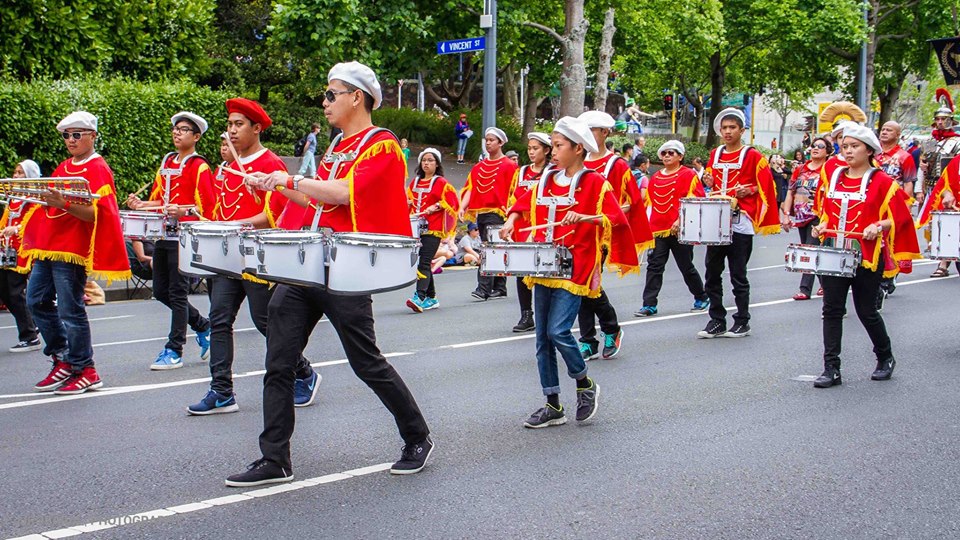The Sto. Niño devotion:
An enduring Spanish Legacy
By Warren P. Angliongto
Cebu City
FIESTAS in honor of patron saints are among the most effective way of gathering people and keeping the spirit of the Christian community alive.
Of all the fiestas, that of the Sto. Niño has captured a large following of devotees from islands south of Manila, particularly in Cebu–Legazpi’s Ciudad del Santissimo Nombre de Jesus, a center of political economics and religious activities in the south.
Nowhere in the country is the devotion to the Sto. Niño as intense than in Cebu. Every third Sunday of each year, throngs of the faithful converge in the centuries-old Basilica del Santo Niño to venerate the miraculous icon of the Holy Child enshrined in a marble chapel, and to accompany the solemn procession of the icon as it winds through the major streets, surrounded by a sea of humanity fired by faith in the power of the God-Child.
The propagation of the devotion to the Holy Child as boy and king was of Spanish origin. It was most avidly promoted by the reformed order of Carmelite nuns led by the enigmatic St. Teresa of Avila in the 16th century.
From La Madre, the devotion to the Christ Child caught on. Icons of the Child Jesus soon began to appear in many churches and homes in Europe and was mass-produced in Flanders (now Belgium). It gained wide popularity in Prague and Bohemia in the Vitarra River.
Eventually, the cult of the devotion to the Holy Child reached Latin America, Asia and the rest of the Christian world.
In 1517, King Charles V of Spain visited Flanders and brought home with him to Spain several Flanders-crafted icons of the Holy Child, one of which was given to the adventurer Ferdinand Magellan who took the icon with him in his voyage to the other side of the world and to Cebu. In this Malay settlement, Magellan gave the icon as gift to the wife of the Cebuano datu (chief) in 1521.
Nothing was known of the icon until 44 years later when it was discovered by Juan Camus, a soldier in the second Spanish expedition led by Miguel Lopez de Legazpi, in one of the charred houses in the old Sugbu in 1565. The event also marked the founding of the first permanent settlement in Cebu named City of the Most Holy Name of Jesus in 1571.
On April 28, 1565, Fr. Andres de Urdaneta founded the first convent of the Augustinians and church housing the Sto. Niño.
Devotion spreads
From Cebu, the devotion spread throughout the islands where Christianity was accepted as faith. Sometime in the 18th century, the now-popular weekly Friday novena was introduced in Cebuano by Augustinian Fr. Mateo Diez who served as rector of the sanctuary from 1889 to 1893. The booklet was printed in Guadalupe (Manila) Asilo de Huerfanos in 1888.
The popularity of the devotion was of such magnitude that Fr. Juan Delgado, in the 1700s, commented that ”the island of Cebu ranks first in dignity on account of the miraculous image that set his residence in this island and which was found by the Spaniards on the first day of the conquest.” Fr. Egidio Vivara, father provincial of the Jesuits in the Philippines, added in 1773: ”Sto. Niño is the most famous in all the islands” referring to the Visayas and Mindanao.
The chronicles of the Augustinians recalled the miracles of the Holy Child, ranging from temporal to spiritual favors.
The first of the accounts of the miracles attributed to the Holy Child was written by Fr. Nicolas de la Cuadra, rector of the convent from 1698-1713, in a booklet along with several letters and prayers, titled ”Milagros del Santo Niño” and ”Sermone Misticas.” It was Father De la Cuadra who initiated the ornamentation of the icon with precious jewels and held solemn rites in its honor.
Other tales of the icon border on the subversive during the pagan years in which none was known about the whereabouts of the icon. The 44-year gap to the rediscovery of the icon has indigenized the Sto. Niño into the culture and religious beliefs of the natives who have reverted to their old ways with Magellan’s death. Their animistic perceptions at the time the Sto. Niño was introduced were after all quite apparent.
Oral tradition has it that King Humabon of Sugbu worshipped Bathala, which interestingly, according to some interpreters, actually means Bata Allah or Child-God. This deity was supposed to have been naughty and would sometimes play pranks on its followers. It was sooty and had curly hair.
Thus, it would not have been too difficult for the natives to accept the Iberian icon; and for Queen Juana to tearfully accept the icon from Pigafetta, chronicler of the Magellan Expedition. This in part would explain the rather embarrassing historical postscript that recounts the presence of an icon of Mary at the bottom of the well, evidently discarded in disesteem, at the time the Sto. Niño was found.
It would seem then that within the so called ”pagan years,” before the icon was reinstalled in its proper edifice and reclothed with the entry of Legazpi, the ancient worship of the Bata Allah kept by the natives, was evidently united with the Christ Child in the form of the Sto. Niño. To the natives then, the Sto. Niño was Bata Allah reconfigured.
Pagan myth
With this fusion of the personality of the native and Christian God in the figure of the Iberian icon came the tales that may have formed an oral tradition in Old Sugbu explaining the presence of the icon whose powers was recognized by the natives.
These tales later evolved with almost religiously subversive myths with the entry of Legazpi who restored the icon to Christian veneration.
The tales claimed the Spaniards stole the icon and wrestled the power of the Child-God called Salvador del Mundo or Ai Suno, found in the settlements of Bohol, Cebu and Mactan and renamed it the Sto. Niño, which is now celebrated all over the islands.
These tales may be explained as an attempt by adherents of the old faith to resist the change brought by the white men whose presence and belief system disrupted the existing religion, especially when they reclaimed the icon of the God-Child already revered by the natives as one of their deities.
Though claimed by the natives as their own, the Spaniards in Legazpi’s time believed the icon was obviously of European features even though it was clothed in native garments called pinukpok.
Another tale emerged: Could it be also possible that an earlier mission by the Franciscans or a Chinese trading ship have brought over the icon, and hence the probability of a pre-Hispanic evangelization?
Powerful symbol
Whatever these claims are, the Sto. Niño remains a powerful symbol of faith both to the natives centuries ago and to the present-day converts.
People continue to talk of the touch of the powerful hand of that Little Child in their personal lives as ”when the lame walked, the mute spoke, the seafarer overcoming a storm and a fisherman getting more catch than usual, a leper cured, harvest crops were preserved from force majeure” and other signs and wonders that have touched many lives.
Those stories of faith continue to be told far and wide, especially to those who feel shorn of miracles in their lives. They serve as a testimony to the power of faith. Many derive comfort from them and miracles are retold to all who believe with childlike faith in He who made His dwelling among men.








